1.St. Peter's Basilica
Address: Piazza San Pietro, 00120 Città del Vaticano, Vatican City.
Opening hours: Daily 09: 00 - 17: 00, except holidays
Date of creation: 1506-1626 r.
Prices: free admission
What's included in the attraction: one of the most famous religious monuments in the world, the main temple of Christianity, art monuments, architecture, sculpture and paintings of prominent Renaissance artists.
Website link: https://www.vatican.va/various/basiliche/san_pietro/index
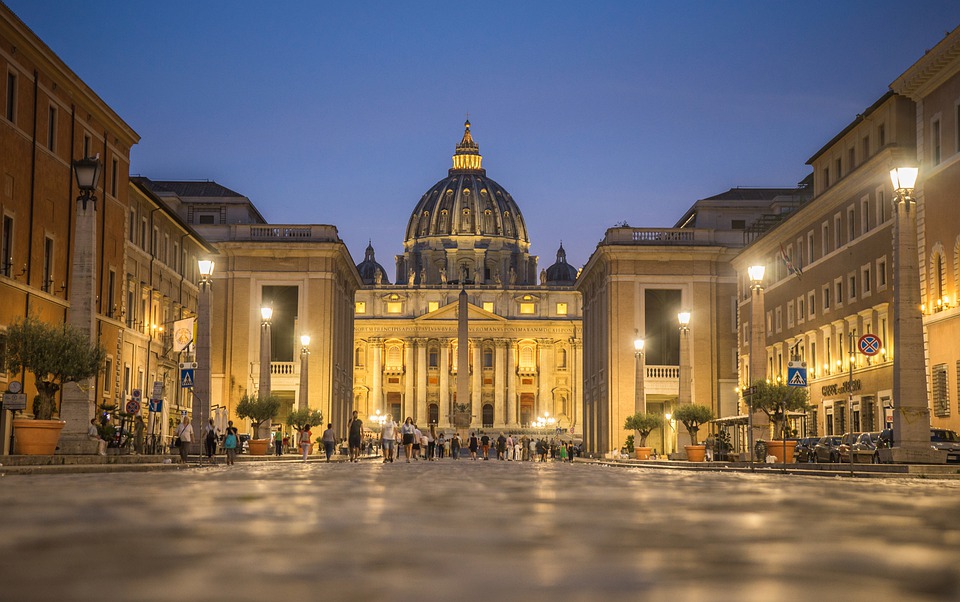
The Papal Basilica of St. Peter's in the Vatican., one of the most famous buildings of the Renaissance and Baroque eras, is the main temple of Christianity and also one of the most visited monuments in Italy.
Construction of the Basilica began at the beginning of the 16th century. and its location is linked to the burial place and martyrdom of St. Peter, considered the first pope and father of the Roman Catholic Church. The nearly 115 m and high on 45 m facade, with a colonnade topped with statues 140 saints, is the most recognizable icon of the Vatican.
Wonderful Mosaics, paintings, sculptures and frescoes attract both devotees and amateur art lovers, who can admire the works of such artists as Michelangelo, Raphael Santi, Bernini whether Sangallo. Even a visit to the Basilica for a few hours may be too short to explore the Basilica, the Vatican grottoes and climb to the top of the dome overlooking the entire Vatican. Every wall, altar, aisle and vault is stunningly decorated. Of greatest interest to visitors is the Pieta -. chisel sculpture Michelangelo, statue St. Peter's seated on a throne, the famous Altar with a canopy, and the tomb of St. John Paul II.
2.Basilica of St. Clement in Rome
Address: Via Labicana, 95, 00184 Roma RM
Opening hours: 10:00-12:30 and 15:00-17:30, Saturdays and Sundays 12:00-17:00
Date of creation: 12th century.
Prices: free admission, archaeological part: €5-10
What the attraction contains: Roman Catholic Church, dedicated to St. Clement and founded in the 4th century, numerous monuments of early medieval art, architectural and sacred monument.
Website link: http://www.basilicasanclemente.com/
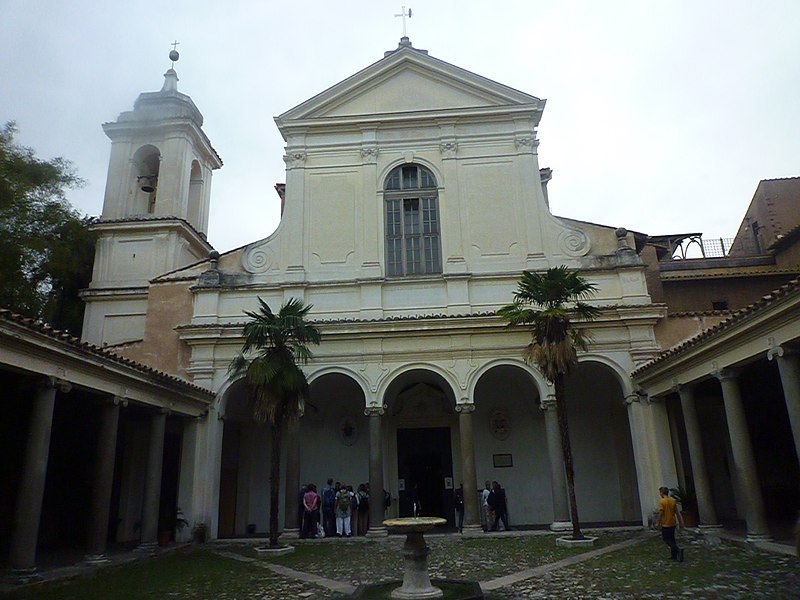
The first records of a temple located on the site of today's Basilicas of St.. Clement, come from 392 r., which is why it is considered one of the oldest churches in Rome. The church dedicated to the saint and martyr was built in its present form in the XII v. but its history dates back to the 4th century, and within its walls synods were held in the 417 and 499.
Most of the oldest monuments collected in the Basilica date back to the 12th century., however, in the archaeological section, evidence of the temple's activity in the first centuries of Christianity is also available to the public; visiting this part may involve the purchase of a ticket. The Basilica of St. Clement includes 4 levels, on which you can admire unique art monuments.
The main altar with the relics of the basilica's patron saint, magnificent mosaics, marble ancient columns, Colorful frescoes with the oldest sentences written in Italian or the beautifully decorated balustrade separating the choir and historic relics from the first centuries of Christianity attract numerous faithful and tourists, who can be found on all levels of the Basilica and in the colonnaded courtyard.
3.Basilica of St. Paul behind the Walls
Address: Piazzale San Paolo, 1, 00146 Roma RM
Opening Hours: Daily 7:00 am - 6:30 pm
Date of construction: 4th century (present basilica from 19th century, rebuilt after fire).
Prices: free of charge
What the attraction contains: One of the four major basilicas in Rome, the burial place of St. Paul the Apostle. Monumental interior with colonnades, mosaics in the apse and portraits of all the popes.
Website link: https://www.vatican.va/various/basiliche/san_paolo/index_en.html
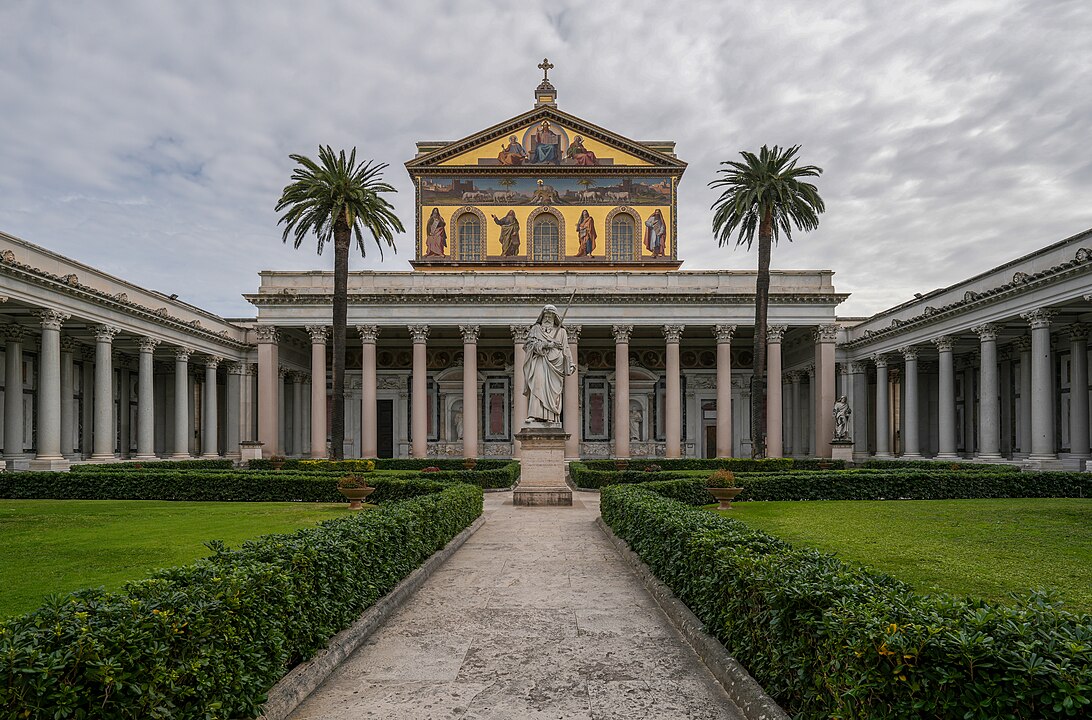
The Basilica of St. Paul behind the Walls, built in the 4th century by order of Emperor Constantine the Great over the burial site of St. Paul the Apostle, is one of the most important and impressive Christian churches in Rome. Although the original basilica burned down in the 19th century, it was faithfully rebuilt and still impresses today with its majestic interior and austere elegance.
Known for its enormous size - second only to St. Peter's Basilica - it has a five-nave structure supported by rows of granite columns. In the chancel you can admire an intricate 13th century mosaic depicting Christ surrounded by saints, and along the walls are portraits of all the popes - from St. Peter to the present day.
The main attraction is the tomb of St. Paul, visible beneath the altar through a glass window - the site attracts pilgrims from all over the world. The silence, monumentality and spirituality of the place make the Basilica of St. Paul behind the Walls a unique, free museum of sacred art and history in one.
4.Church of St. Louis King of France in Rome
Address: Piazza di S. Luigi de" Francesi, 00186 Roma RM
Opening hours: Monday-Friday 09:30-12:45 and 14:30-18:30, Saturday 9:30-12:15 and 14:30-18:30, Sunday 11:30-12:45 and 14:30-18:30
Date of creation: 1518-1589 r.
Prices: free admission
What's included in the attraction: a Renaissance-Baroque Roman Catholic church, a richly decorated architectural and sacred monument, a unique collection of paintings by the brush of Caravaggio.
Website link: https://www.basilicasanclemente.com/eng/

A church dedicated to a French king from the family of Capetines, the Virgin Mary and St. Dionysius, was built almost 70 years, it was only Catherine de Medici's personal intervention that allowed the temple to be put into use for the faithful.
Erected in Rome, the church is the national church of France, the presence of French influence, can be seen both on the facade of the church where it is arranged scenes from the life of Charlemagne as well as inside the temple, and the wealth of Baroque and Renaissance ornamentation still delights to this day. Art connoisseurs visit the Church of St. Louis King of France, mainly for the opportunity to see the exquisite paintings adorning the temple, including the 3 brush paintings Caravaggio dedicated to the person of St. Matthew.
Full of realism works decorating chapel of the Contarelli "The Vocation of St. Matthew"., "Saint Matthew and the angel". and gave the artist international fame and the title of "the most famous painter of Rome." In the church you can also admire wall paintings showing scenes from the lives of the saints of the church, stunning frescoes and richly decorated vaults and decorative chapels.
5.Church of Our Lady of Victory in Rome
Address: Via Venti Settembre, 17, 00187 Roma RM
Opening Hours: Daily 7:00am-12:00pm and 3:30pm-7:00pm
Date of creation: 1620 r.
Prices: free admission
What's included in the attraction: Located on the Roman Quirinal, a baroque Roman Catholic temple from the 17th century, an architectural monument, numerous art monuments, including sacred paintings by the most prominent representatives of the Italian Baroque and Renaissance.
Website link: https://www.rome.net/santa-maria-della-vittoria
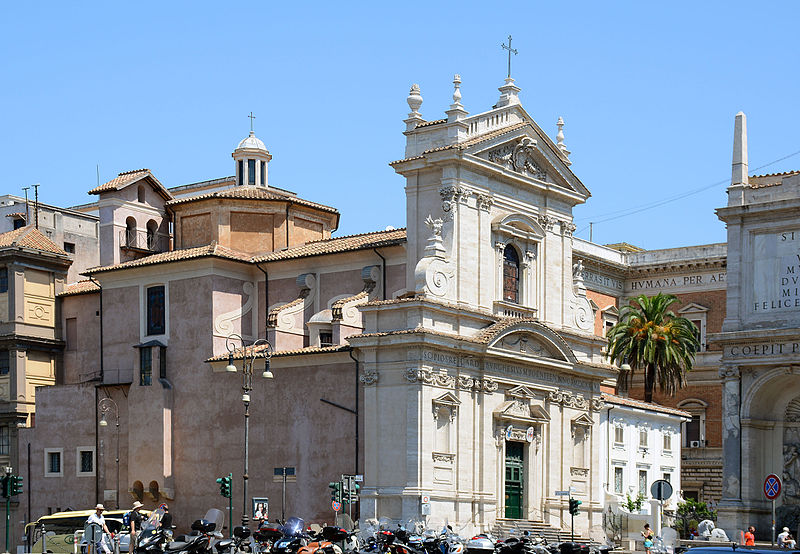
One of Rome's more interesting churches - Santa Maria della Vittoria, was built on the site of an earlier chapel dedicated to St. Paul, and its chief architect was the Carlo Maderno - The main designer of the facade of St. Peter's Basilica.
The Baroque temple suffered heavily during a fire in the 1833r., but is now completely restored. The titular church - assigned to successive cardinals by the Pope - has taken the name of Our Lady of Victory, in memory of the battles on the White Mountain, where the Catholic coalition defeated the Protestant armies of the Bohemians in the 1620 r. The lump of the church and the exterior facade do not particularly stand out among other churches of a similar period, but its interior conceals a magnificent frescoes, paintings and icons.
The painting on the ceiling and its continuation in the dome, depicts a Our Lady in the company of angels and the fall of Lucifer cast down to hell along with the rebellious angels. The side chapels display magnificent Baroque sculptures, including a Ecstasy of St. Theresa chiseled Bernini, which has become one of the more controversial sacred works. Interest in the church increased with the issuance of the video "Angels and Demons" based on Dan Brown's novel, using mysterious and full of symbolism church frescoes and paintings.
6.Basilica of Santa Maria Del Popolo
Address: Piazza del Popolo, 12, 00187 Roma RM
Opening hours: Monday-Friday 07:30-12:30 and 16:00-19:00, Saturday 07:30-19:00, Sunday 07:30-13:30 and 16:30-19:30
Date of creation: 1099 r.
Prices: free admission
What's included in the attraction: a Renaissance Roman Catholic church, works by prominent painters of the era, art monuments.
Website link: http://www.santamariadelpopolo.it/
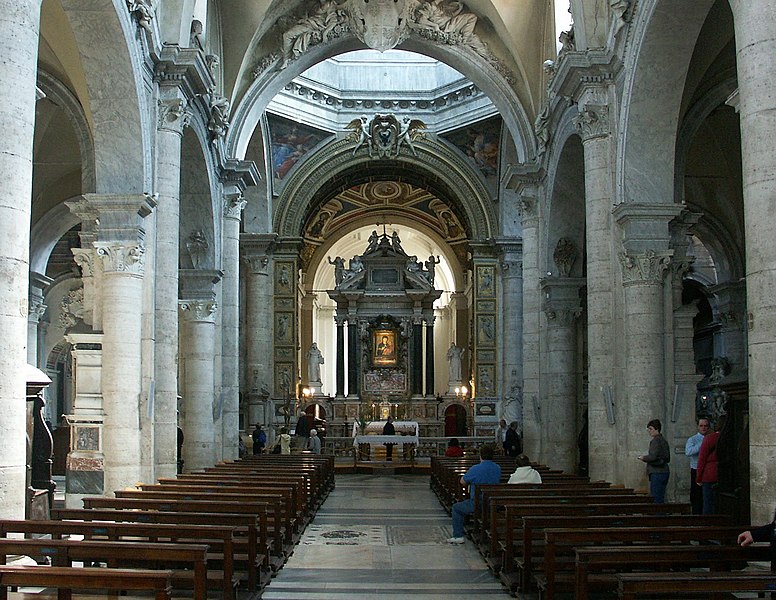
A true gem of Renaissance architecture, Basilica di Santa Maria Del Popolo, was the first Roman building rebuilt in the style of the era. The history of the church dates back to XIth century. and the temple itself stood, according to legend, on the resting place of Emperor Nero.
The name of the Basilica, referring to the people, probably has to do with the construction of the temple by the Roman people as a votive offering to Mary for the liberation of the Holy Sepulcher in Jerusalem. The Basilica has been rebuilt several times, obtained its present shape in the XVw. during reconstruction in the spirit of the Renaissance and later renewal in 1658r. designed by the famous Roman architect Bernini.
A three-nave temple, practically every niche and shrine hides true masterpieces of art. Sculptures chisels Lorenzetto and Bernini decorate the chapel Chigi, designed by Raphael Santi himself, the mystery and the many symbols placed in the chapel, used the Dan Brown in his novel "Angels and Demons", which has increased interest in the basilica among visitors and the faithful. Among the most valuable artifacts, the church houses two famous paintings by Caravaggio "Crucifixion of St. Peter." i "Conversion of St. Paul.". Currently, the Basilica is the titular church of Cardinal Stanislaw Dziwisz.
7.Church of the Holy Name of Jesus - Il Gesù Church
Address: Via degli Astalli, 16, 00186 Roma RM
Opening Hours: Daily 7:00 a.m. - 12:00 p.m. and 4:00 p.m. - 7:15 p.m.
Date of creation: 1568-1584 r.
Prices: free admission
What the attraction contains: Architectural and sacred monument, baroque church, the first temple of the Jesuit order, rich ornamentation, marbles, sculpture, painting and baroque frescoes.
Website link: https://www.chiesadelgesu.org/
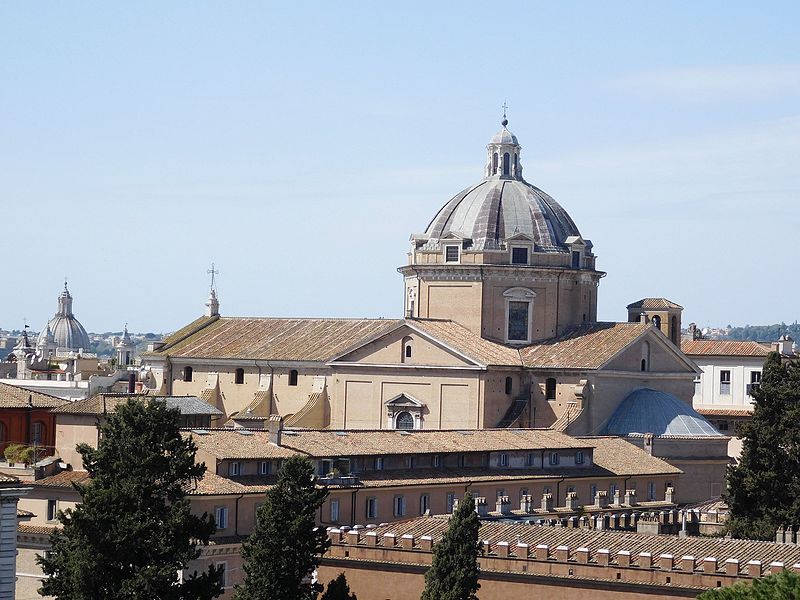
Church of the Holy Name of Jesus, is best known among the faithful as KIl Gesù church, and similar shaped temples can be found all over the world, it was this church that was the model for subsequent Jesuit buildings. Construction of the temple began in 1598r. - It was the first sacred building for the newly established papal Jesuit order - . Society of Jesus, founded by Ignatius Loyola.
It is believed that the Church of Il Gesù, was the first typically Baroque building in Rome and very quickly became a basic architectural model. The church inside represents the true richness of the period, magnificent ornamentation, stucco, gilding, Colorful marbles, frescoes, paintings and sculptures. The colorful paintings on the main vault show allegorical heavens, enriched with stucco sculptures of angels, while figures of prophets and saints of the church are arranged around the dome.
The most admired by the faithful are the following frescoes by Baciccia including a stunning piece of work "The Triumph of the Name of Jesus"., each dome-covered chapel is resplendent with a wealth of medieval sacred art in this XII v. paintings and sculptures depicting the life of the Holy Family and key figures of the church. In one of the chapels of Il Gesù are deposited the relics of the founder of the Jesuit order -. St. Ignatius Loyola, to which the faithful from all over the world make pilgrimages.
8.Basilica of Our Lady Major
Address: Piazza di S. Maria Maggiore, 42, 00100 Roma RM
Opening Hours: Daily 07:00 - 18:45
Date of creation: 431 r.
Prices: admission to the church free, fees charged only in the museum section
What's included in the attraction: the historic Papal Basilica, which houses relics of great importance to the Roman Catholic Church, historic mosaics and works of sacred art, and the burial place of prominent artists.
Website link: https://www.vatican.va/various/basiliche/sm_maggiore
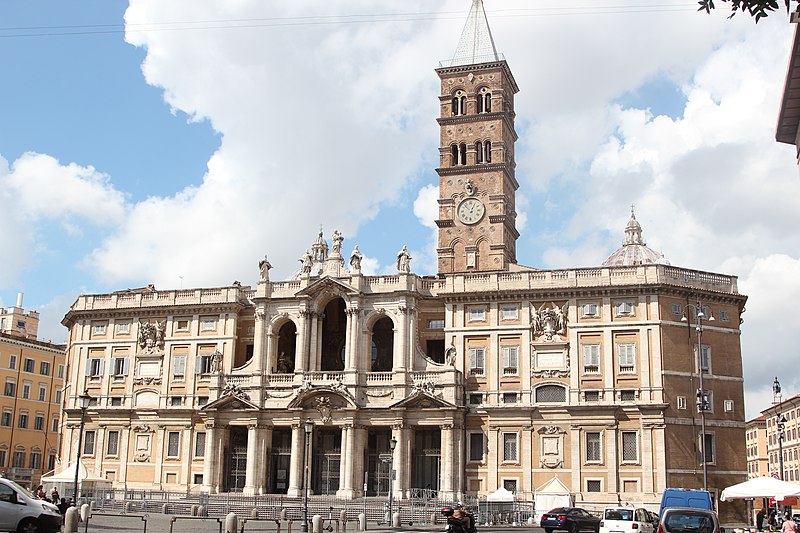
Papal Basilica of Our Lady Major, is also known as the Basilica of Saint Mary at the Manger and the Basilica of Our Lady of the Snows. According to legend, the site of the temple was pointed out to Pope Liberius by Mary while he was sleeping, ordering the church to be built on a snowy site, a few days later snow fell on the hill of Esquiline in the middle of summer.
The church is of great importance to the faithful because of the relics of the manger in which the birth of the Jesus. Archaeological and historical research, confirms that the wood of the reliquary comes from the vicinity of Palestine and is about 2tys years old. The interior of the temple impresses with its rich ornamentation, colorful marbles, frescoes, carvings and paintings. One of the church's the chapel known as the Sistine, designed the famous Roman architect Domenico Fontana.
Bodies of several popes and members of papal families, as well as prominent Romans, were deposited in the Basilica. Giovanni Lorenzo Bernini - one of the most famous Baroque artists. There are also a few Polish touches in the Basilica, with one of the chapels on the The bas-relief immortalizes the Polish king Sigismund III, on the frescoes you can find the figure of St. Kinga the wife of Boleslaw the Chaste, and in the museum section a reliquary of the Polish clergyman St. Jacek Odrowąż from the 13th century.
9.Basilica of St. John Lateran
Address: Piazza di S. Giovanni in Laterano, 4, 00184 Roma RM
Opening Hours: Daily 07:00 - 18:00
Date of creation: 314 r.
Prices: free admission, fee charged for entry to the cloisters.
What's included in the attraction: Considered the most important church of the Roman Catholic Church, the historic Basilica, the former seat of the Popes, an architectural monument, and the repository of relics and works of sacred art important to Catholicism.
Website link: https://www.vatican.va/various/basiliche/san_giovanni/
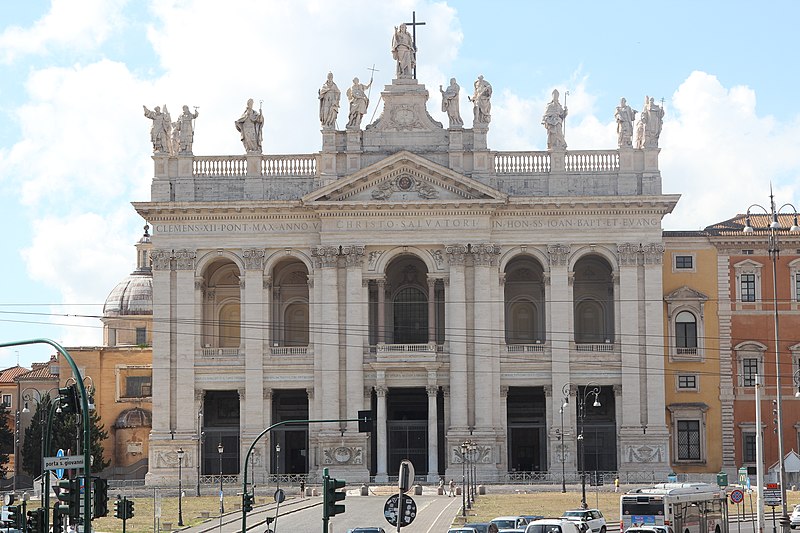
Basilica of St. John Lateran is one of 4 patriarchal basilicas of Rome, but is the only one to bear the name Archbasilic, It is the most important temple of the Roman Catholic Church. After Christianity was accepted as the legitimate religion, Emperor Constantine, gave the church the site of today's basilica, and for more than 1,000 years it was the seat of the papacy, 161 successive popes were hosted here, and many of them were buried on the temple grounds.
The Basilica acquired its present form in the 17th century, today's over 130m facade is decorated with a colonnade, and its top is adorned with a 15 giant statues 7m high. The grandeur of the interior of St. John's Basilica, is largely due to the famous architect's Francesco Borromini responsible for rebuilding the church. The central part of the basilica is occupied by an altar, at which only the pope or a priest appointed by him can celebrate mass, every part of the temple is very richly decorated, you can admire the magnificent sculptures of the apostles, antique mosaics and paintings from the early Christian period, frescoes and stucco or the ancient entrance door.
Most pilgrims who come to the Basilica admire the unique relics, such as the staircase - on which Jesus was scourged, fragments of the table - at which St. Peter celebrated Mass or the miraculously painted image by St. Luke and the angels.
10.Basilica of the Holy Cross of Jerusalem
Address: Piazza di S. Croce in Gerusalemme, 00185 Roma RM
Opening Hours: Daily 10:00 a.m. - 12:00 p.m. and 4:00 p.m. - 6:00 p.m.
Date of creation: 4th century.
Prices: free admission
What the attraction contains: A historic basilica from the early days of Christianity, an architectural monument, numerous works of sacred art, and a place where relics important to Christians are kept.
Website link: http://www.santacroceroma.it/en/

Basilica of the Holy Cross from Jerusalem was built in the middle of the IV in. and its name refers to the most precious of the relics kept here. According to legend, the mother of Emperor Constantine -. St. Helena, brought to Rome extremely valuable relics she had acquired during her travels in the Holy Land, including fragments of the cross on which Jesus was crucified.
Within the walls of this unique church can be found numerous relics from the early days of Christianity valuable to historians and believers alike, including a baptismal font in which baptisms were performed Emperor Constantine, the magnificent statue of St. Helena, the three-story bell tower, the historic mosaics or the 15th century frescoes.
However, most of the faithful visit the Basilica because of the extremely precious relics, important to the Christian faith, including the aforementioned fragments of the cross of Jesus, the thorns from the crown of thorns, the nail - with which Jesus was nailed to the cross, the finger of St. Thomas, the beam from the cross of the Good Scoundrel, a fragment of the column - at which Jesus was scourged and the Part of Titulus Crucis - plaques with the inscription Jesus Christ King of the Jews, which was nailed to the Savior's cross.


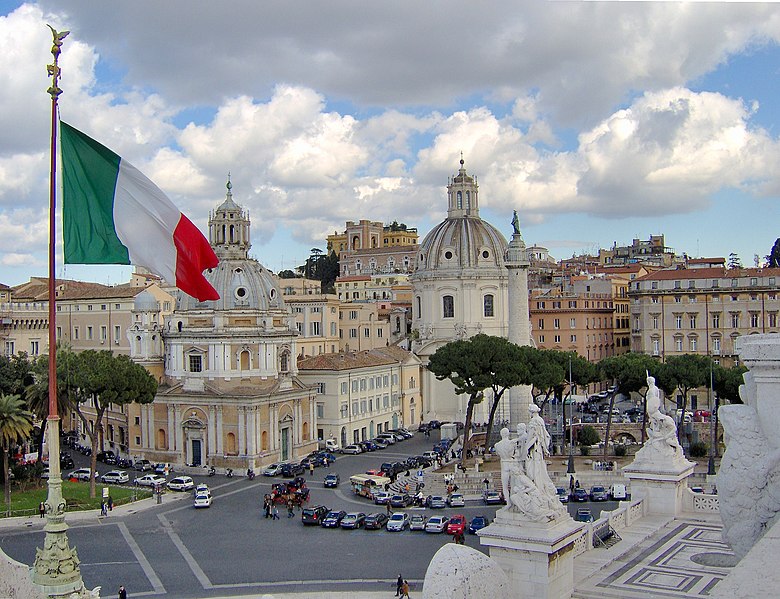
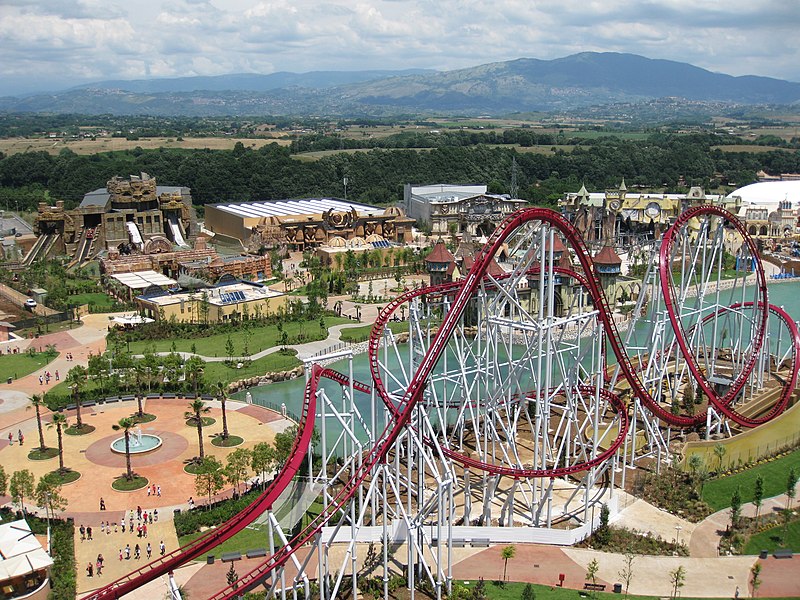

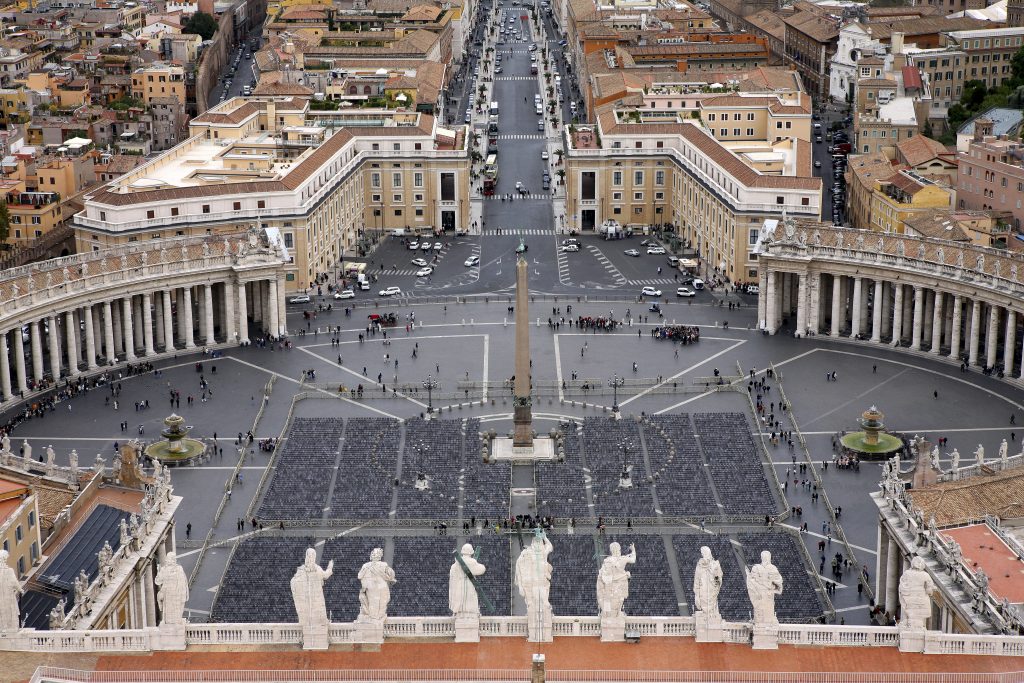

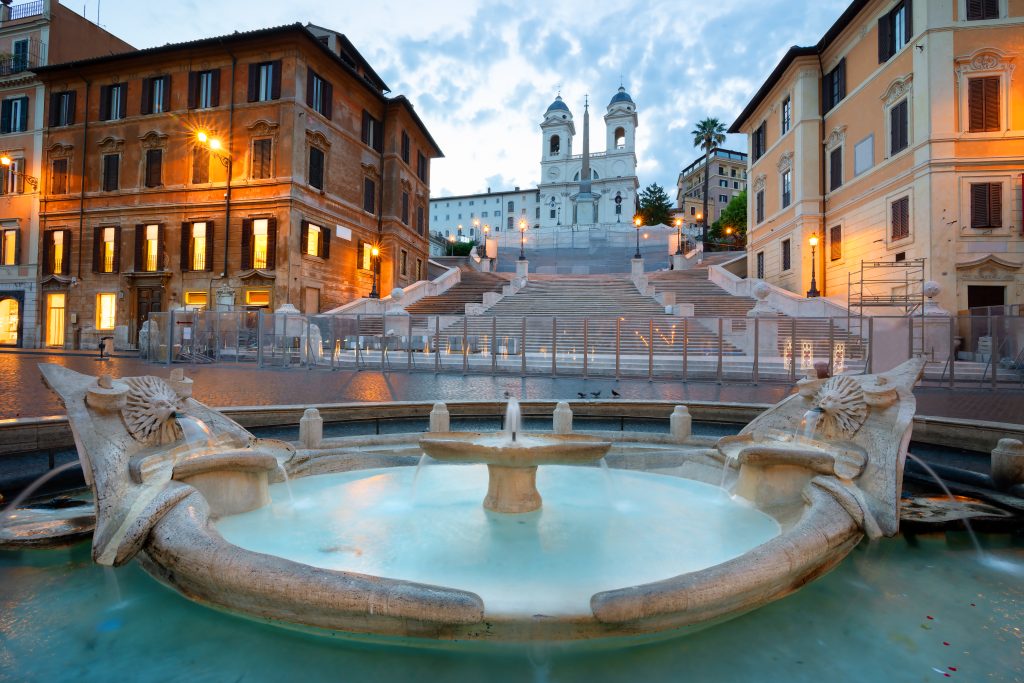
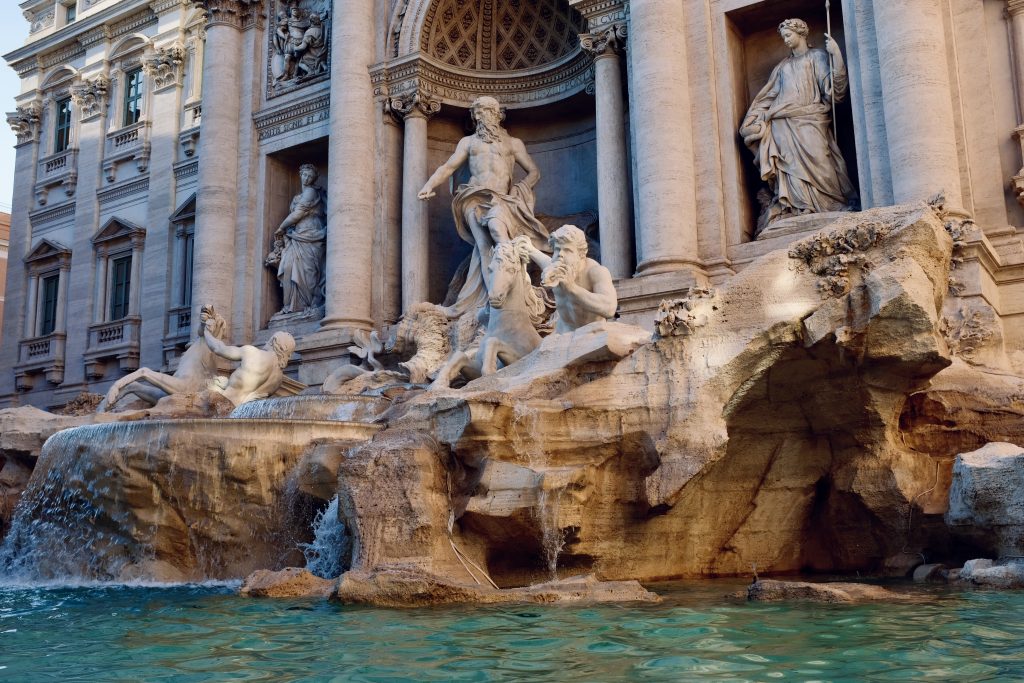
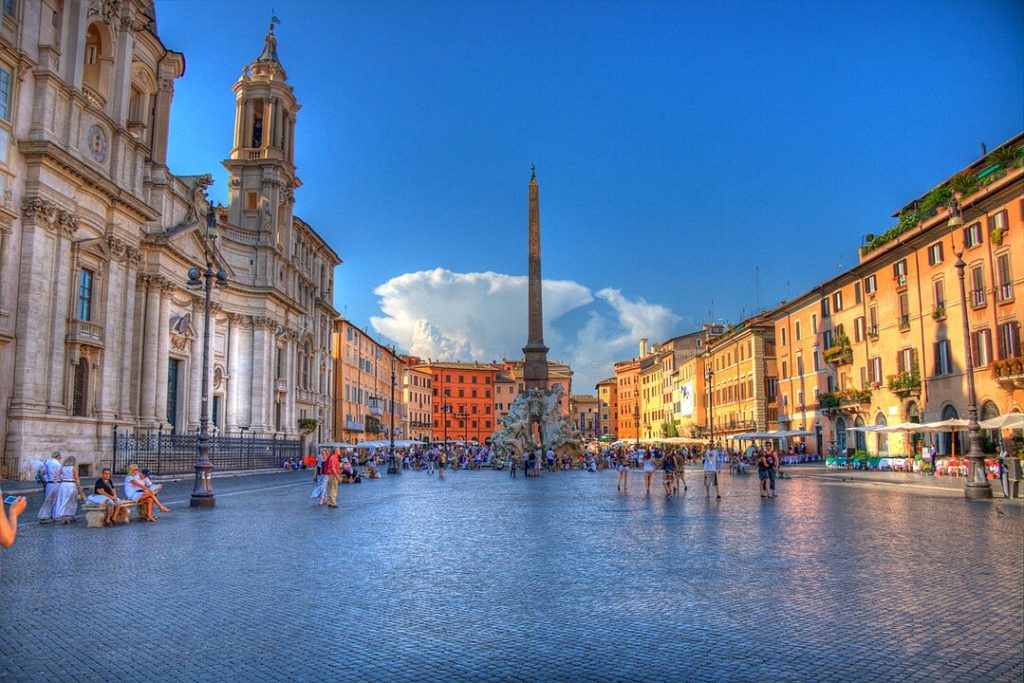

The Basilica of St. Clement in Rome is a fascinating place for families with children! Wandering through the different levels of this ancient basilica is like traveling back in time. Children will surely be fascinated to discover the hidden nooks and crannies and the mysterious history of this place.
Hi everyone! Reading this article about free "museums" in Rome, I had the impression that someone had confused cities with museums. Most of the places mentioned are magnificent churches that are amazing from an artistic point of view, nevertheless they are more for spiritual reflection than for exploring classic museum exhibits. Don't get me wrong, I love the beauty of architecture, but I nevertheless expected something a little different than the suggestion of the sacred on every list of Roman attractions. As an aside, however, I prefer classical museums!